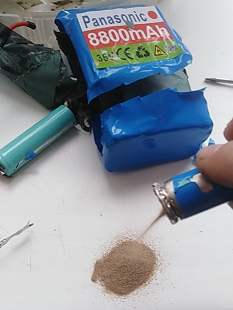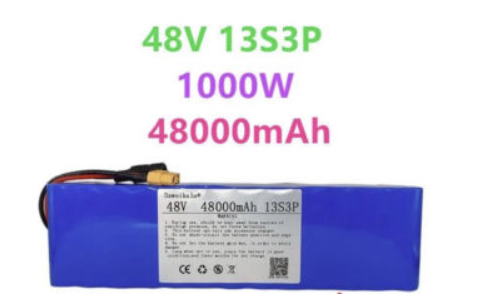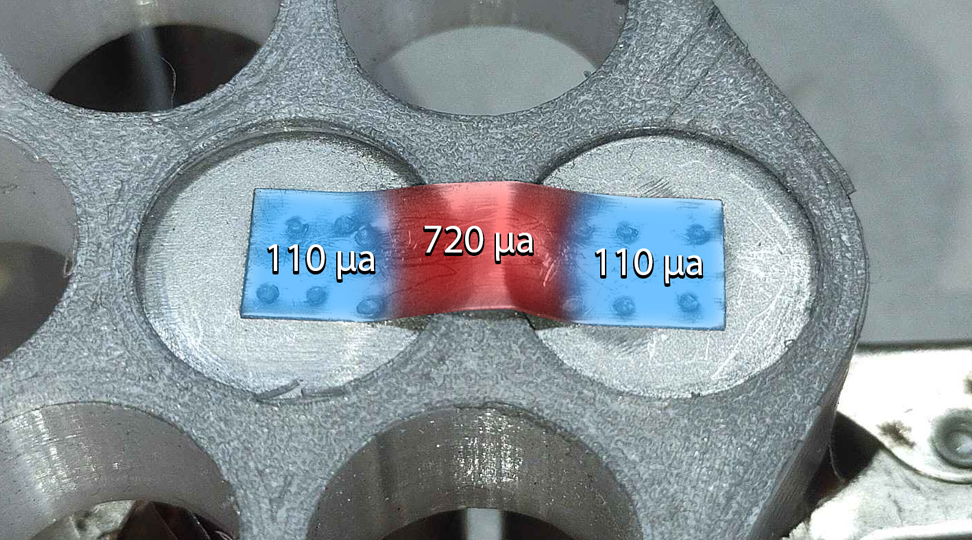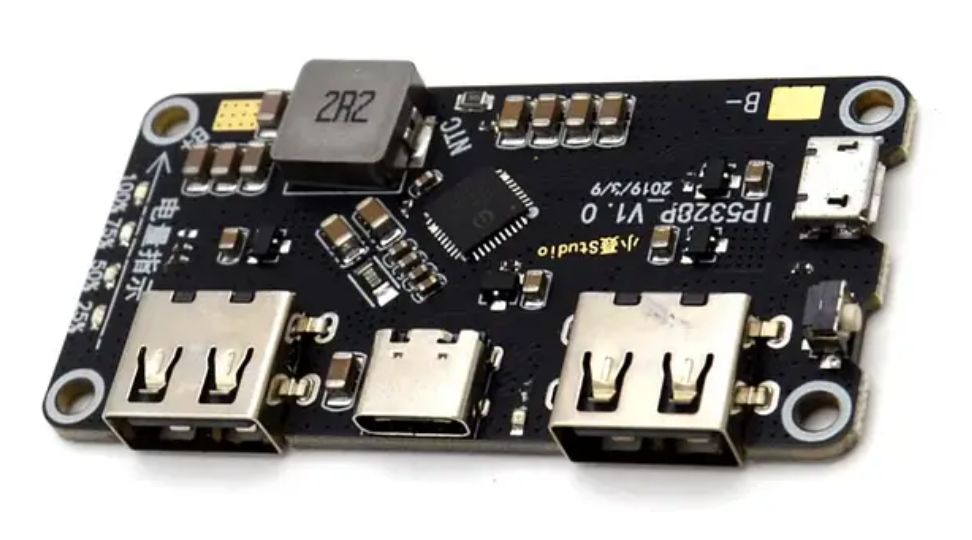
How to Know If You're Buying a Fake Battery
Table of Contents
- Understanding Battery Terminology: OEM, Genuine, Counterfeit, and Fake
- So, Why Are Fake Batteries So Bad?
- Visual Inspection: Signs of Fake Batteries at First Glance
- Using Weight to Identify a Fake Battery
- Performance Analysis: How Genuine and Fake Batteries Differ in Efficiency
- Packaging Clues: Identifying Genuine Battery Packaging vs. Counterfeit
- Serial Numbers and Holograms: Verifying Authenticity Through Unique Identifiers
- Wishy-Washy And Inconsistent Listing Elements
- If It’s Too Good To Be True, Then It’s Not
The use and sale of counterfeit batteries has become a growing concern in recent years. Fake batteries are often made with inferior materials and components and can be dangerous to use. They can cause damage to devices, and in some cases, even cause fires. In addition, counterfeit batteries can be unreliable and fail to provide the expected performance.
Determining whether a battery is fake or genuine can be challenging, but there are some telltale signs to look out for. A visual inspection can reveal physical differences in shape, size, and labeling, and paying close attention to logos and trademarks can also be an indicator of a fake battery. Additionally, weight can be a telltale sign of an imitation battery. This is because low-quality cells simply don't have as much chemistry in them. Performance analysis is the most direct way to tell if a battery is good or bad, as fake batteries often have higher internal resistance and lower performance compared to genuine batteries.
Packaging clues can also help identify genuine battery packaging versus counterfeit, with fake batteries often having exaggerated metrics, especially in terms of capacity. Verifying authenticity through unique identifiers, such as serial numbers and holograms, is another option, although it may not apply to all OEM or upgrade batteries. While these methods may not always be foolproof, they can help prevent falling victim to fraudulent batteries.
In this article, we will go over what to look for when shopping for a battery to make sure you don’t end up with a lemon. We will cover the common tactics that these predatory manufacturers use, and we will tell you what to look for in a good battery.
Understanding Battery Terminology: OEM, Genuine, Counterfeit, and Fake
When it comes to batteries, there are a few terms that you should be aware of. OEM, Genuine, Counterfeit, and Fake are four of the most common terms used to describe batteries. OEM stands for Original Equipment Manufacturer, and those are batteries that are made by the original manufacturer of the device.
OEM batteries are generally not terrible batteries, but because batteries are the most expensive component, it's usually the minimum amount of battery for the application. Not necessarily low quality, but not by any means premium.
Genuine upgrade batteries are those that are made with high-quality components that are actually rated for what they are being advertised as. Counterfeit batteries are those that are made to look like an OEM battery. Fake batteries are made with low-quality components that are advertised as high-quality products. Fake batteries are generally the worst kind of bad battery, as they are made by people that literally have no other objective than to get your money. They will literally say anything, even super impossible things, to lure you in.
Also, fake batteries are, by far, the most dangerous type of bad battery. This is for the same reasons as stated above. If all they care about is getting your money, then they won’t care about not burning your house down, because that happens after they have already gotten your money.
So, Why Are Fake Batteries So Bad?
Counterfeit and outright fake batteries have become a serious problem. Fake batteries are made with inferior materials and components, which means that they are overrated. This can make them dangerous to use, because they can't handle the amount of power that they are advertised as being able to handle. They can even cause damage to devices, and in some cases, fires. Also, fake batteries are known to be unreliable and never, ever live up to the expected capacity or performance.
These misleading batteries are sold at a much lower price than genuine batteries, and they have impossible ratings and marketing claims, making them super attractive to uninformed consumers. Another important thing to remember is that most of the time when a large battery’s capacity is advertised in mAh rather than Ah, it’s usually fake.
Take this WOGQX battery, for example. It’s listed as a 100,000mAh battery, so let’s do the math. There are 1000 milliamp hours in an amp hour (1 aH), so according to this listing, this is a 100 Ah battery. It also says that it is a 10S3P battery, meaning there are just 3 cells in each cell group.
Also, you can clearly see from the size and shape of the battery that 18650 cells are being used. The total pack amp hours are divided among the number of cells in parallel. This means that the seller is claiming that they are using an 18650 cell that has a capacity of 33 Ah, or 33,000 mAh!!
As of the time of this writing, the highest capacity 18650 cell is 3600 ma. Some 4000 ma 18650s were recently introduced, but they are extremely expensive and not very easy to get a hold of right now, so you most certainly won’t find any of them in these bottom-dollar fake batteries.
This means that not only are these sellers lying, but they are lying by an order of magnitude!!
That’s a 10x lie.
These short-term cost savings, however, come at a long-term price. Even if your fake battery doesn’t burst into flames or destroy your device, and even if you are totally happy with the performance you get out of the battery, it will definitely not last as long as a good battery made with high-quality components.
Visual Inspection: Signs of Fake Batteries at First Glance
When it comes to determining a battery’s authenticity, one of the most obvious signs is the physical appearance of the battery. A visual inspection is one of the easiest and honestly most effective ways to determine whether a battery is good or bad. At first glance, there are several signs that can indicate a fake battery. Fake batteries (clones of OEM models) often have subtle differences in shape, size, and/or weight compared to their genuine counterparts. This situation is not too dissimilar from counterfeit jewelry or clothing.
Another thing to look at is the labeling on the battery. Oftentimes, the writing on such batteries will be incorrect or incomplete or have super basic spelling and grammar errors. Also, a different shade of color or a particular texture that differs from known-genuine models is another clear indication the battery may be fake.
Pay close attention to any logos or trademarks, as they can be a key indicator of a fake battery. Sure, a battery counterfeiter could perfectly represent these things, but they often do not. After all, if they were willing to use a lot of effort, they would not be trying to get rich quickly by selling fake batteries.
Using Weight to Identify a Fake Battery
When it comes to batteries, weight is often a great indicator of authenticity. The outside of a battery can be made to look exactly like an original if enough effort is used. The weight, however, is impossible to trick unless the battery maker literally puts weights in the battery. If they did that, it would be super obvious that it was a scam, so most of the time, they don’t.
Battery chemistry is dense. So, if there is a lot of it in a battery- which would be required to make a high-capacity battery- the battery is going to be heavy. Cheap, low-quality cells simply don’t have a lot of chemistry in them, so they are just not all that heavy.
A really easy way to figure out if a battery pack is legit is to put information into our battery pack planner tool to see if it's possible.
It gets pretty rough. There are several images and stories floating around on the internet that show batteries taken apart to find them filled with sand to increase the weight of the battery. So, just because a battery is heavy, doesn’t mean it’s legit. I have not personally seen enough evidence for it to definitely not be competitors trying to make their competition look bad.
The good news is that there is a way to sort of verify this. A particular cell chemistry will have a certain amount of watt-hours it can store in a given volume and weight. If you can take a battery’s electrical claims and physical characteristics and do a little math, you may be able to see if a given battery is even possible or not.
Performance Analysis: How Genuine and Fake Batteries Differ in Efficiency
By the time you have gotten to this testing method, it's too late, but we will explain it anyway. Comparing efficiency and performance is the most direct, for sure, totally reliable way to tell if you are looking at a good battery or a bad one.
A fake battery will always have an internal resistance that is much higher than a genuine, OEM, or high-quality upgrade battery. Genuine batteries are specifically designed to meet a particular electrical performance standard, like being able to provide a certain amount of power for a certain amount of time.
Fake batteries, on the other hand, have no guidelines they need to meet other than appearing extremely attractive to the end user. A lot of the time, these low-quality batteries are even made with used and reclaimed cells that absolutely will not have the performance that they used to.
Packaging Clues: Identifying Genuine Battery Packaging vs. Counterfeit
Counterfeit and fake batteries will generally have massive, bright-colored numbers and specs that sound way, way too good to be true. One of the most lied-about metrics regarding these batteries is, of course, their capacity.
For example, let's assume we are looking at a battery that is advertised as a 10S4P battery made with 18650 cells and advertised as having a 20,000mah (20ah) capacity. What that means is that it will have parallel groups composed of 4 cells and then 10 of those groups in series. With the most common chemistry, which is NMC, this means that the resulting battery will have a nominal voltage of 36 volts and will have four times the amount of capacity as a single cell.
At the time of this writing, the highest capacity commonly used 18650 has a capacity of about 3600mah (3.6Ah). This means that a 4P battery simply cannot have a capacity any higher than 14.4 Ah. Also, it's super important to consider that those 3600mah cells are very expensive and you most certainly won’t find them in any cheap batteries. If you can even find these cells, they are Panasonic NCR18650G (if you can find them online send us a link, we want some!!!)
Serial Numbers and Holograms: Verifying Authenticity Through Unique Identifiers
This does not apply to upgrade batteries, and it doesn't apply to all OEM batteries, but it does apply to some. Some brands use serial numbers and holograms to mark their products as genuine.
These things are not impossible to fake, but they are very difficult. Also, a perfectly made fake serial number could be cross-referenced with actual company data and be determined to be fake. Gaining access to these systems can sometimes be challenging, but there is usually some way to verify a serial number.
One of the easiest ways to gain access to a company’s serial number database would be to attempt to call in for a warranty claim or for information based on your device, using the serial number as a reference.
Some companies even allow you to use their products' serial numbers to check and see if whatever device you have has been reported stolen or not.
Wishy-Washy And Inconsistent Listing Elements
Another clear sign of a low-performance battery is errors in the listing title and feature list. If you see a battery that says, 500W, 750W, 1000W, 1500W Ebike battery, or something like that, then just avoid it. They are stuffing search terms in their listing and that’s all it is. A battery is capable of a particular amount of current. That current level is multiplied by its voltage and that's how many watts the battery can support. That’s that. It is not a range, but instead an exact figure.
One could argue that this is done to show what power-level ebikes the battery is compatible with, but don't let that fool you. That is not why these people are doing that. Just so you know, the watt rating on a battery is the max amount of power it can support. As long as that number is higher than the amount of power you plan on taking from the battery, you won’t have any issues in that regard.
If It’s Too Good To Be True, Then It’s Not
Look, the old saying about how you get what you pay for is not exactly 100 percent accurate all the time. It is totally possible to spend less money on something and actually end up with a better product. This, however, is more often the exception rather than the rule. Also, in the field of batteries, it’s pretty rare.
This is because, by nature, batteries are expensive. It takes a lot of research & development, time, effort, and cold hard cash to turn a battery chemistry into a usable product. Also, high-performance batteries require many cells and many complex connections between the cells. So, in most cases when it comes to batteries, you really do get what you pay for.
If you have some illusion of saving hundreds of dollars because you found a way better product that cost one-tenth the price, just know that you are indeed fooling yourself.
Conclusion
The rising prevalence of low-quality batteries is a troubling issue. These tOo-gOoD-tO-bE-TrUe-cAuSe-tHeY-dEfInItElY-aRe-LiEs imitation batteries are crafted with subpar materials and components, which makes them pose significant safety, performance, and reliability risks. They will always underperform and fail to deliver on their advertised capabilities.
The appeal of these fake batteries lies in their lower price points and seemingly attractive performance claims, which are just total lies designed to lure in unsuspecting consumers. With a fake battery, you never get what you pay for, it's always something way less than that. The short-term savings simply are not worth the actual long-term cost.
Even if the counterfeit battery does not result in catastrophic consequences, its lifespan will inevitably be shorter than that of a genuine, high-quality battery. Because of this, it’s super important to be vigilant and prioritize purchasing authentic batteries to ensure safety, reliability, and long-term value.
Determining the authenticity of a battery can be hard, but it's not impossible. As long as you know what to look for and what to avoid, you will be in good shape. A visual inspection can reveal physical differences and labeling errors, indicating a fake battery. Weight and performance analysis, though, can decisively prove that a battery isn’t legit. Additionally, paying attention to packaging clues and unique identifiers such as serial numbers and holograms can also be helpful in verifying authenticity. Another important thing to look out for is capacity and claimed current carrying capably. If what the battery claims are outside of the scope of what known-available cells are capable of doing, then it's fake.
It is important to note that while these methods may not always be foolproof, they can significantly reduce the risk of falling victim to fake batteries. By taking the time to inspect and verify the authenticity of batteries, consumers can ensure that they are purchasing high-quality products that meet their needs and expectations.
We hope this article helped you effectively learn how to avoid buying a fake battery. Thanks for reading!




